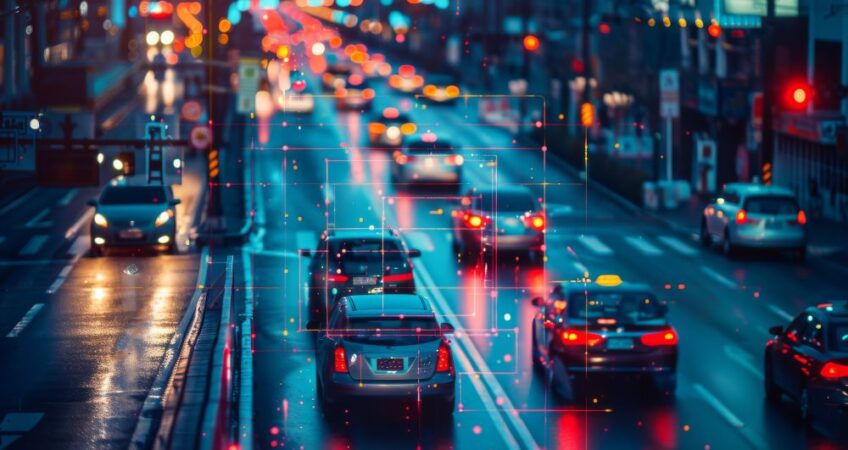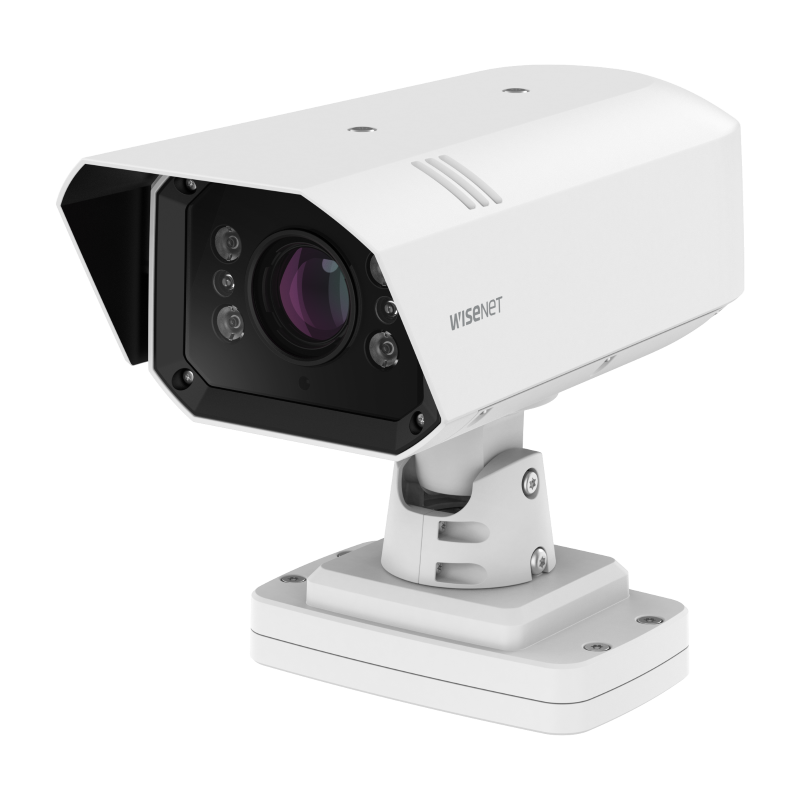License plate reader (LPR) cameras are advanced security tools designed to automatically capture and analyze vehicle license plate information. These cameras are typically installed at key locations such as parking lots, private roads, and entry points to secure areas where monitoring vehicle movement is crucial. The technology behind LPR cameras allows for real-time identification and analysis of license plates using Optical Character Recognition (OCR) software.
OCR software, powered by artificial intelligence (AI) and machine learning, enables LPR systems to read and record license plate details that might be difficult for the human eye to interpret. This makes LPR cameras invaluable for security personnel, property owners, and law enforcement, as they enhance their ability to track and investigate suspicious vehicles with precision.
Types of LPR Cameras
LPR camera solutions come in various forms to suit specific security needs. Here are some common types and their unique functionalities:
- License Plate Recognition Cameras: These are fully equipped to not only capture but also analyze license plate data through internal AI and external database searches, providing detailed insights into vehicle movement.
- License Plate Capture Cameras (LPC): These cameras focus on capturing license plate data but lack the built-in analysis or database search features that full LPR cameras offer.
- IP-Based LPR Cameras: These cameras transmit and receive data over secure internet connections, allowing remote access for security teams to review footage or integrate with other systems.
- Automatic License Plate Recognition (ALPR): Most modern LPR systems come with automatic functionality, allowing them to process data without manual intervention. The terms ALPR and LPR are often used interchangeably today.
- Handheld Tag Reader Cameras: These portable versions of LPR cameras are typically used by law enforcement for on-the-go checks, enabling officers to capture plate data while on patrol or during traffic stops.
Key Features of LPR Cameras
When considering LPR camera systems, it’s essential to prioritize certain features to ensure the system meets the unique needs of the security operation. Here are some important features to look for:
- Playback Capabilities: Multi-camera playback allows security teams to link LPR cameras with other surveillance systems, offering more comprehensive footage for investigations.
- Advanced Analytics: High-end LPR systems come with AI-powered capabilities to analyze vehicle make and model, improving detection accuracy and image enhancement.
- Search Functionality: LPR systems that feature native database search capabilities allow for fast retrieval of license plate data by date, time, or location, aiding in efficient investigations.
- Camera Specifications: Opt for cameras that offer long-range zoom capabilities and high-resolution imaging (such as 4K cameras) to ensure clear, detailed captures.
- Integration with Other Systems: LPR cameras can be most effective when integrated with access control, alarm systems, or other security measures. Look for systems that support open APIs for seamless data sharing across platforms.
Applications of LPR Cameras
LPR cameras can be deployed across various industries and settings to support security and management efforts. Below are some common applications:
Parking Management
Businesses and property managers can use LPR cameras to improve parking lot monitoring. These systems can automatically track vehicle movements, ensure available spaces are utilized effectively, and assist with parking enforcement.
Access Control
LPR cameras can be integrated with access control systems to automatically allow or deny vehicle entry based on registered license plate data, reducing the need for physical tickets or badges.
Security and Investigation
Security teams can rely on LPR cameras for event investigation by linking footage with other surveillance systems. They can also automatically track suspicious vehicles and provide data for law enforcement or further action.
Commercial Real Estate
LPR cameras enhance security at commercial properties by controlling access points and monitoring vehicles entering or exiting the premises. They can also provide real-time alerts of unauthorized vehicles or loitering activity.
Retail Security
In retail, LPR cameras help manage customer parking, improve curbside pickup operations, and strengthen loss prevention by monitoring vehicles associated with suspicious activity.
Gated Communities
For gated communities, LPR systems are essential for controlling access, ensuring only authorized vehicles enter, and reducing parking disputes among residents.
Law Enforcement
LPR cameras assist law enforcement in a variety of ways, from issuing fines for parking or speed violations to helping track down suspects involved in crimes. They can also be used to monitor tolls and low-emission zones.
Installing LPR Camera Systems
When setting up an LPR system, several considerations must be made to ensure the cameras provide reliable, high-quality footage:
- Optimal Camera Placement: Cameras should be positioned in high-traffic areas, such as parking lot entrances, exits, and choke points, where vehicles are most likely to pass at a controlled speed.
- Proper Height and Angle: The cameras should be mounted approximately 5 meters above the ground at a 30° angle, ensuring clear captures of vehicle license plates.
- Camera Settings: Adjust settings such as exposure, focus, and zoom to optimize image clarity. Some cameras come with specialized settings for day and night operation to maintain performance in different lighting conditions.
- Regular Maintenance: LPR systems require ongoing maintenance. Ensure cameras are installed in easily accessible yet protected areas to prevent vandalism, and include anti-tamper features when necessary.
LPR camera systems provide a powerful tool for businesses, property managers, law enforcement, and other stakeholders to monitor and analyze vehicle traffic effectively. With advanced AI and machine learning capabilities, these systems offer valuable insights that support parking management, access control, security investigations, and more. When installed and maintained properly, LPR cameras can significantly enhance security operations and improve overall efficiency across various use cases.

Article by – Dale Grant
Marketing Coordinator


